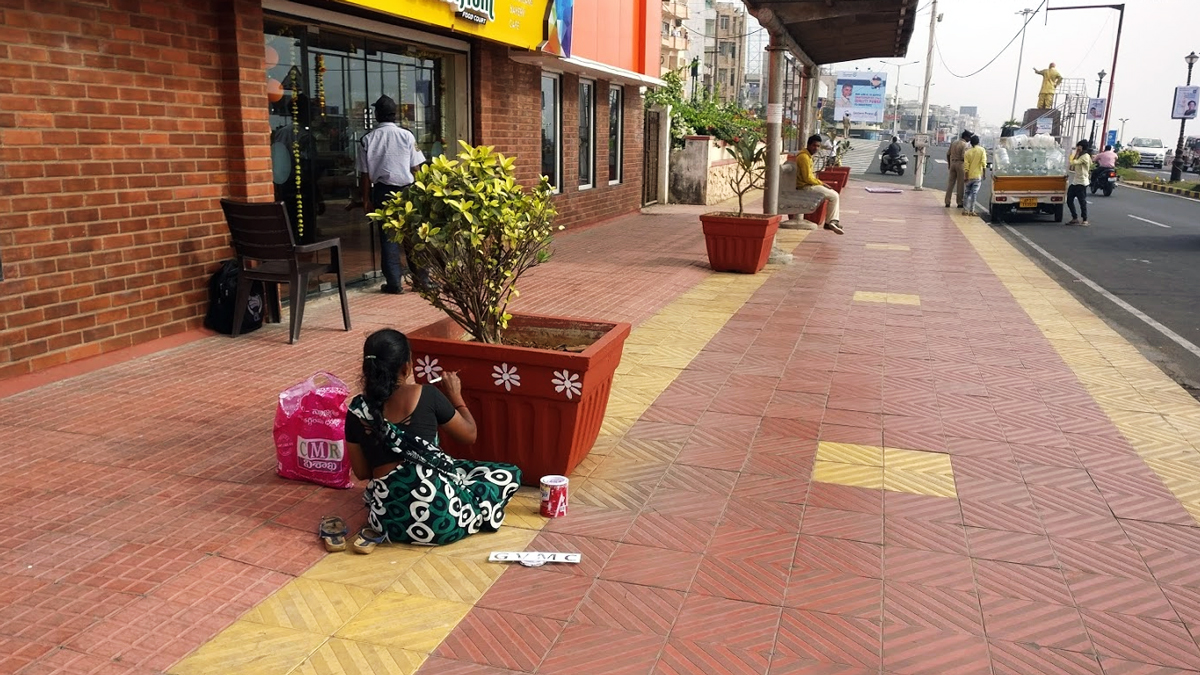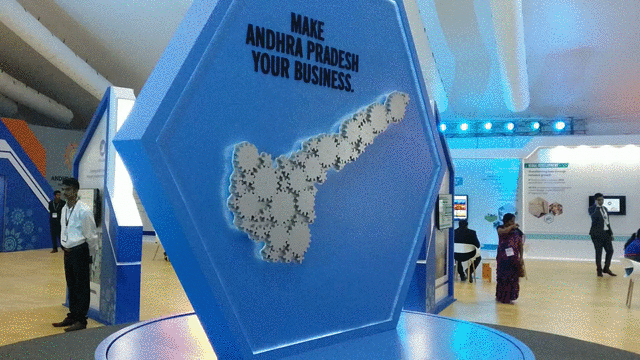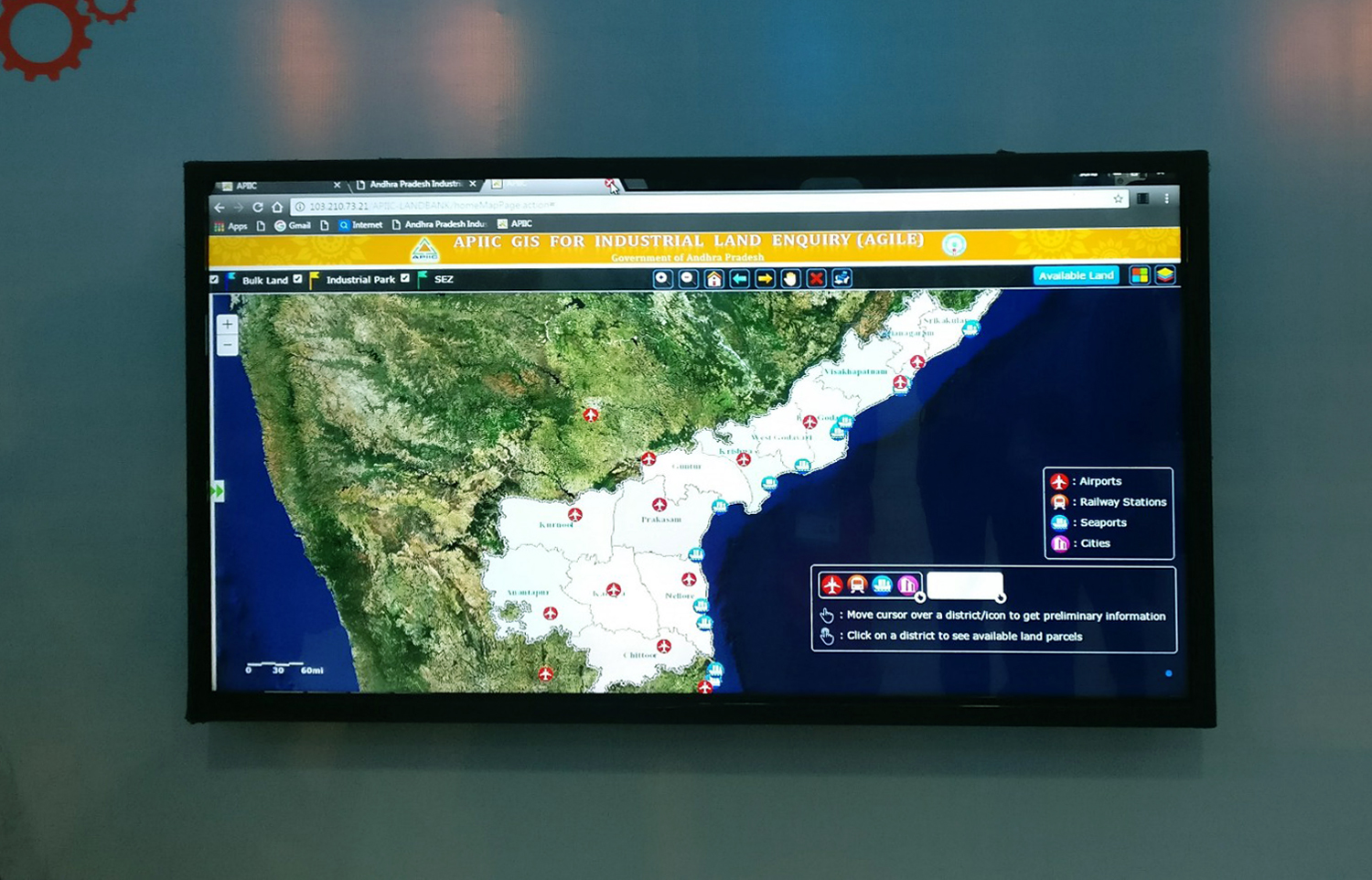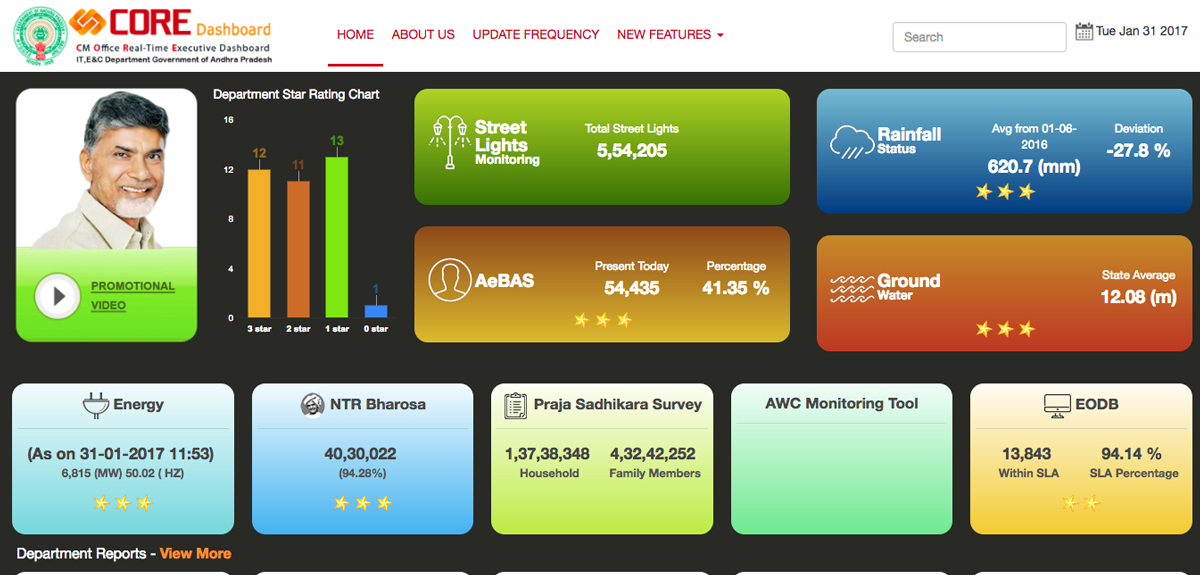Story Highlights
- If the grandness of vision for Amaravati is anything to go by, the audacity of Chandrababu Naidu's ambitions has only increased
- Naidu stays away from political rhetoric and the past. He is selling a future. He brings up machine learning, AR / VR and automation
- If he can succeed in putting Andhra on the growth map, its success can show India the way to grow for the future
As dusk sets on India’s 68th Republic Day, I land in Visakhapatnam chasing the future of a state whose borders were realigned less than three years ago.
I am here to attend the CII Partnership Summit, being hosted for the second consecutive time in Vizag, with a mixture of scepticism and curiosity. Government-focused summits tend to be heavy on propaganda. At the same time, I am interested in hearing about the plans India’s most tech-savvy chief minister has for growing a state that’s dropped from being the third largest to eighth spot by GDP after the bifurcation.
I walk out of the airport into a swarm of cops, commandos and huge hoardings featuring the chief minister and the summit. Hundreds of card-holding chauffeurs are waiting for delegates (both from India and abroad). There is a sense of occasion, especially considering that Vizag’s suddenly been thrust into the centre of so much attention.
I am interested in hearing about the plans India’s most tech-savvy chief minister has for growing a state that’s dropped from being the third largest to the eighth spot by GDP after the bifurcation
Words like “Sunrise Andhra Pradesh” and “ready for the future” are liberally scattered everywhere my eyes go. I am excited.
At the turn of the 21st century, Chandrababu Naidu was among the few politicians who proactively bet on the IT revolution, making Hyderabad a force to reckon on India’s job and growth map. Today, having lost his crown jewel to the newly bifurcated Telangana, he has a similar, but more massive task at hand — getting Andhra Pradesh on the growth map. How will he go about it this time around? What is he going to bet on?
If the grandness of vision for Amaravati is anything to go by, the audacity of his ambitions have only increased. It fascinates me to think that in 2017, a state can go about building a brand new capital for itself from scratch. It reveals the fledgling nature of our democratic experiment, but it also raises hope. A smart, green city built ground-up with clear zoning, well-rounded transport and public infrastructure, sustainable practices and limitless energy sounds like a utopian dream.
I am brought jarringly back to reality outside the airport — there is no network on my phone to book an Uber. After a brief struggle (and much cursing Vodafone), I find just enough network and data juice to book one. Perhaps smart cities should wait?
As I am whisked towards the city in the darkening twilight, a murky, industrial landscape rolls past me — large factories, massive tanks of oil and chemicals and chimneys belching smoke. A tiny 10MW solar plant flashes past — a step towards the new world that Naidu wants to build if the 24×7 uninterrupted power supply promises in the hoardings are anything to go by.
A smart, green city built ground-up with clear zoning, well-rounded transport and public infrastructure, sustainable practices and limitless energy sounds like a utopian dream
The roads are fantastic.
Enroute, I try my luck by shooting off a message to the joint secretary to the chief minister, P Pradyumna, asking him if we can talk. I don’t hope for a reply — he doesn’t know me and it’s only through a series of fortunate events earlier in the day that I’ve even gotten his contact. Besides, he is from the government, after all. Things don’t work easily in that department in our country.
But I’m surprised. Within minutes of sending the text, my phone dings with a message from him. “In a meeting with the CM. Let’s meet tomorrow.”
A day at the summit
As I take an Uber to the event venue, I see a city dressed up for the big occasion — smooth roads gleaming with fresh lane markers, large paved footpaths and walls painted up in pretty colours. “The CM is here today,” says the Uber driver proudly. He raves when I ask him how he’s performed so far.

Once at the venue, I’m hit by the sheer scale of the summit. The registration area is chaotic and choc-a-bloc with people. I see suits (dotted with a few sarees) everywhere. The main hall is massive — nearly 2,000 people are listening to the theme-setting session that’s underway. I listen in for sometime before walking off to explore the venue — I am more interested in the session in which the CM is to speak later.

I visit the Andhra Pradesh showcase hall. There is an impressive showcase of developmental proposal and promises — industrial corridors, fintech capital, A&D hubs, and the Pollavaram project, the massive infrastructural project that claims it will start another agricultural revolution in India and bring hydel power.
Around noon, I get to meet Pradyumna in his official room at the summit. He asks me to wait as he talks to a bunch of his “juniors”. I catch snatches of conversation in Telugu — one of them is an IIT Madras student who has worked at Google. I am fascinated by the team, all fairly young and with great pedigree, working so close to the head of a state.
“We are in the middle of industrial revolution 4.0” — P Pradyumna, joint secretary to the chief minister
“We are in the middle of industrial revolution 4.0,” Pradyumna says. On his desk is a diary that says Davos 2017 — from the world economic forum summit that took place a little over a week back.
He tells me that the IT revolution in its current form is over and the next wave is going to be automation. He continues to talk about everything from IOT to smart cities and the need to develop more than 20,000 data scientists. I engage with him readily — this, after all, is the narrative I’ve been following closely for the past eight months at least. I find it impressive that I am hearing all this from a state government official.

But I also find myself wondering: How much technology Kool-Aid has the team drunk?
Back at the summit, Naidu stays away from political rhetoric and the past. He is selling a future. I am surprised when he brings up machine learning, augmented reality (AR) / virtual reality (VR) and automation — these aren’t the words you hear spoken on stage by Indian politicians.
His plans do look impressive on paper.
Back at the summit, Naidu stays away from political rhetoric and the past. He is selling a future. I am surprised when he brings up machine learning, AR / VR and automation
Besides building the greenfield capital city of Amravati, the government is also pushing to complete a nearly four decade old, massive infrastructure project — the Polavaram project, which strives to link the Godavari river with the Krishna to bring water to over 6 lakh hectares of agricultural land.
Vizag is being pitched as the fintech valley of Andhra Pradesh including the 30,000 sq ft millenium towers (which seem to be taking shape based on the visual evidence on show here), an IT park at Kappulaguda, and various discounts and subsidies. Words like blockchain centres of excellence, IOT and smart cities are bandied about liberally. There is a lot of talk around supporting startups.
I walk around to see an SME owner discussing land availability with someone from the government, presumably. They are projecting a real-time land bank availability visual on the wall and are contemplating the best parcels available for this particular use.

In fact, it’s in the collection and use of data where I see concrete evidence of the world the CM wants to build. The government’s CM Office Real Time Executive (CORE) dashboard tracks everything from rainfall and groundwater supplies to Aadhaar biometrics-based government employee attendance by district. I am suitably impressed.

“You won’t find anyone else in India having as much data as we do,” Pradyumna says confidently. He concedes that it’s all in a silo currently and that they’re scouting for data analytics, artificial intelligence (AI) and machine learning startups to make predictive analysis from all this information — preventive healthcare is a major area the government is looking to invest in.
Outside, in the exhibition hall, I learn about the International Institute of Digital Technologies — an initiative by the government to offer PG courses in topics of the future — cybersecurity, digital analytics, AR / VR, fintech, IOT, cloud computing, mobility and blockchain. It’s an impressive and relevant array of topics. But I wonder where the experts to teach these topics are coming from.
Could Andhra Pradesh show us the future?
As I come out of the summit, I can’t help but feel high on the awesome show of technology. As a view of the future, it’s all very impressive. But how many of these things will actually translate into reality, I wonder. All of them need serious investments from a state that inherited a huge revenue deficit — where would the money come from?
As a view of the future, it’s all very impressive. But how many of these things will actually translate into reality
Earlier in the day, when Naushad Forbes, president of CII, proudly stated that there are airports in India that were perhaps better than those in the US, Norman Pearlstein, the chief content officer of Time Inc, retorted back, “But you need roads to get to airports.” Norman then proceeded to recount a story about how when he travelled to Bangalore 20 years, the roads were bad and they continue to be the same today. India continues to ignore basic infrastructure, he says.
This cautionary perspective has a sobering effect on my heady view of the future-tinted vision I’ve seen. To Naidu’s credit, Andhra Pradesh has been ranked Number 1 in ease of doing business in the country and has attracted the highest private corporate investments in 2015-16.
As I take an Uber back to the hotel, I read a day-old story of the government of Karnataka seeking to ban UberPool and Ola Share. Suddenly, the massive contrast in thinking between the two state governments hits me. The Karnataka state government has been regressive and apathetic (their confusing and unhelpful handling of e-commerce taxations being another example). In many ways, Bangalore, recently voted the most dynamic city in the world, is succeeding despite its government and not because of it. How long can this last?
Can Naidu steal Bangalore’s thunder?
It isn’t easy.
Naidu has has a long, steep climb ahead of him if he has to propel the state into the future without creating a large chasm of inequality in the process
Over the next two days, whenever I step off the spruced-up, LED-lit major streets, I encounter parts of Vizag that don’t quite gel with the talk of IOT and smart cities. The litters of tiny shops and kirana stores that seem to be barely sustaining. Roadside eating places teeming with customers while large malls and shopping centers aren’t nearly as crowded. The numerous street beggars and more than a few walls drenched in urine and garbage, right under ‘Swachh Visakhapatnam’ signages.
Naidu has has a long, steep climb ahead of him if he has to propel the state into the future without creating a large chasm of inequality in the process.
If he can succeed, it will be spectacular. Andhra Pradesh’s success can show India the way to grow for the future. If he stumbles, we may still gather some relevant lessons on how to go about chasing the future.
Either way, this would be a state worth watching, very closely.
Subscribe to FactorDaily
Our daily brief keeps thousands of readers ahead of the curve. More signals, less noise.
To get more stories like this on email, click here and subscribe to our daily brief.
Lead visual: Nikhil Raj Disclosure: FactorDaily is owned by SourceCode Media, which counts Accel Partners, Blume Ventures and Vijay Shekhar Sharma among its investors. Accel Partners is an early investor in Flipkart. Vijay Shekhar Sharma is the founder of Paytm. None of FactorDaily’s investors have any influence on its reporting about India’s technology and startup ecosystem.








